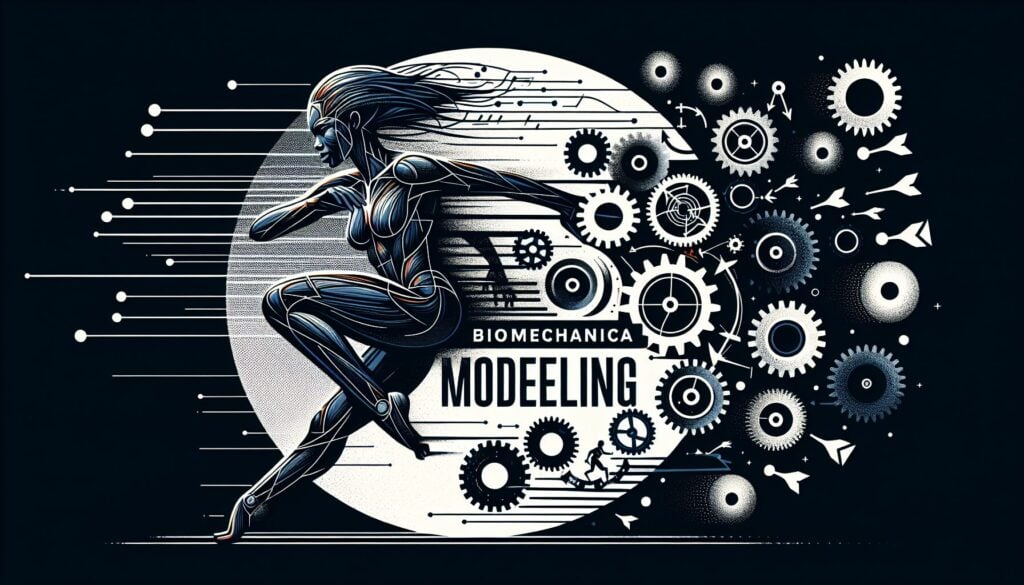Die Anwendung mechanischer Prinzipien (Physik, Ingenieurwesen) zur Analyse der Kräfte und Belastungen, die bei körperlichen Aktivitäten auf den menschlichen Körper einwirken.
- Methodologien: Wirtschaft, Lean Sigma, Herstellung, Problemlösung, Qualität
Biomechanische Modellierung

Biomechanische Modellierung
- Design für Nachhaltigkeit, Ergonomie, Menschliche Faktoren, Maschinenbau, Risikomanagement, Simulation, Spannungsrisskorrosion
Zielsetzung:
Wie es verwendet wird:
- Computermodelle oder mathematische Gleichungen werden verwendet, um menschliche Bewegungen zu simulieren und innere Kräfte (z. B. auf Gelenke, Wirbelsäule) bei Aufgaben wie Heben, Schieben oder Tragen zu berechnen.
Vorteile
- Ermöglicht die quantitative Abschätzung interner biomechanischer Belastungen, die nicht direkt gemessen werden können; hilft, Verletzungsmechanismen zu verstehen und die Wirksamkeit ergonomischer Maßnahmen zu bewerten; kann komplexe Bewegungen analysieren.
Nachteile
- Modelle sind Vereinfachungen des komplexen menschlichen Körpers und erfordern Annahmen; die Genauigkeit hängt von der Qualität der Eingabedaten und der Gültigkeit des Modells ab; sie können komplex sein und erfordern spezielle Software und Fachwissen.
Kategorien:
- Maschinenbau, Ergonomie
Am besten geeignet für:
- Analyse der mechanischen Kräfte und Belastungen, denen der menschliche Körper bei der Arbeit ausgesetzt ist, um das Verletzungsrisiko zu bewerten und die Konstruktion zu optimieren.
Biomechanical modeling encompasses a range of applications across various sectors, including healthcare, sports science, and industrial ergonomics, where understanding human movement and forces is paramount. In healthcare, this methodology assists in designing rehabilitation programs by simulating patient movements to tailor interventions appropriately, thereby enhancing recovery outcomes. In sports science, teams leverage biomechanical models to optimize athletic performance, allowing coaches to analyze athletes’ techniques for improved efficiency and reduced injury risk during training and competition. Industrial ergonomics employs this approach during the product design phase, particularly in the development of tools, furniture, or workflows that mitigate physical stress on workers. Participants in these projects typically include biomechanical engineers, ergonomists, health and safety professionals, and product designers, working collaboratively to ensure designs meet ergonomic standards while addressing user needs. This modeling can also be particularly beneficial during early concept evaluations, allowing for rapid iterations and refinements based on simulated feedback, and is often used alongside experimental methods to validate findings through real-world testing.
Die wichtigsten Schritte dieser Methodik
- Define the biomechanical problem and task scenario, including motion parameters and loading conditions.
- Develop a detailed geometric model of the human anatomical structures involved, such as bones, muscles, and joints.
- Specify material properties for the anatomical components based on literature values or experimental data.
- Select an appropriate biomechanical modeling software or mathematical framework for simulation.
- Create or input the kinematic data and boundary conditions relevant to the task being analyzed.
- Set up the dynamic or quasi-static analysis, determining the necessary parameters for simulation.
- Run the simulation to compute internal forces, moments, and stresses in the anatomical structures.
- Validate the model by comparing simulation results with available empirical data or observed outcomes.
- Interpret results to identify potential injury risks and evaluate the impact of different task designs or ergonomics.
- Iterate on the design or task parameters based on findings to optimize for safety and efficiency.
Profi-Tipps
- Utilize advanced finites Element analysis (FEA) to model soft tissue interactions and provide a more comprehensive understanding of force distributions in various tissues during dynamic movements.
- Incorporate real-time motion capture data to refine your computational models for accuracy, allowing for better validation and predictive capabilities regarding individual variability in movement patterns.
- Implement sensitivity analysis within your models to identify which parameters most significantly influence biomechanical outcomes, guiding the focus of ergonomic interventions and design modifications.
Verschiedene Methoden lesen und vergleichen, Wir empfehlen die
> Umfassendes Methoden-Repository <
zusammen mit den über 400 anderen Methoden.
Ihre Kommentare zu dieser Methodik oder zusätzliche Informationen sind willkommen auf der Kommentarbereich unten ↓ , sowie alle ingenieursbezogenen Ideen oder Links.
Historischer Kontext
1687
1750
1788
1800
1800
1800
1810
1687
1738
1757
1788
1800
1800
1800
1820
(wenn das Datum nicht bekannt oder nicht relevant ist, z. B. "Strömungsmechanik", wird eine gerundete Schätzung des bemerkenswerten Erscheinens angegeben)















Verwandte Artikel
Master Production Schedule (MPS)
Massenanpassung
Marketing-Trichter
Marketing-Audit
MAPO-Index (Bewegung und Unterstützung von Krankenhauspatienten)
Fertigungsressourcenplanung (MRP II)